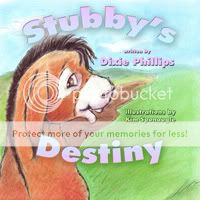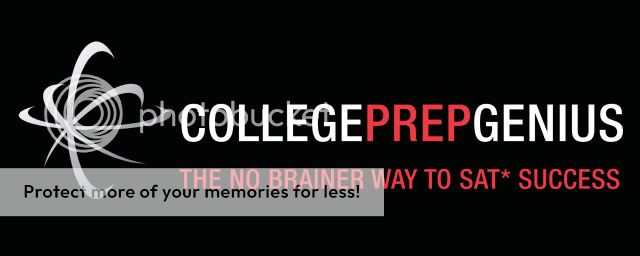
Many incorrectly assume that good readers will equate to good writers. I haven't met a writer that also doesn't love to read, and it is natural to point out the correlation. As a result, homeschoolers make sure their students have a solid reading foundation and then follow up with quality literature. This approach is often a successful method to model proper sentence structure, vocabulary usage, and organization in a way that naturally engages the child.
However, it is not always true that all those who love to read, or have been exposed to quality literature, are natural and gifted writers. Many kids need specific instruction, guidance, and lots of practice. Furthermore, writing isn't just a self-contained subject area to study; it impacts all other subjects.
Vantage Learning, the developer of My Access!, a subscription based writing program, understands the importance of students learning to write, then writing to learn. From the website:
While writing is a unique skill unto itself, it is also closely linked to all areas of learning. Often referred to as "writing across the curriculum", as you combine writing instruction with other areas of study, you'll better understand how well students grasp information and where they need more instruction.Why is it so important to teach writing?

How is My Access! different from other writing programs?
- completely web-based
- can be used with any curriculum
- self-paced
- utilizes artificial intelligence technology for instant feedback
- individualized
- multiple tools, e.g. graphic organizers, are available
How does it work?
My Access has 90 pre-loaded writing lessons for three different ages: 8-10, 11-14, and 15-18. Specific writing topics can be assigned to each student through the parent account. A student can be assigned topics of varying levels. A parent can also create a topic of her own for the student.
When the student logs in, they may select from the topics assigned. Once a topic is selected, they may choose to "start course" or "begin draft". Each course matches the level and writing style of the assignment. For example, a topic in the age 15-18 category reads as follows:
Psychologists have argued for centuries regarding the influences of nature (genetic influences) and nurture (environmental influences) on the human personality. There is evidence to support both views, but the question is ultimately, which of the two, nature or nurture, plays the greatest role in shaping our personality? Write a multi-paragraph essay in which you state and defend your position. Be sure to include specific details and examples to support your argument.The courses are short and are presented with graphics and reading (no sound). The course assigned for the above topic covers the basic elements of persuasive writing, discusses organization, and reviews terms (hook, thesis statement). Material is reinforced with matching exercises. The course closes with tools for evaluating work and leads the student to start brainstorming with a graphic organizer.
The area where students write their draft has a box to type text and includes access to several writing tools (outline, a word bank, original course). Once a draft is submitted, the essay is ranked as "below proficient", "proficient" or "advanced proficient" in the following areas:
- focus
- organization
- content and development
- language use
- mechanics and conventions
Each task, whether it is a lesson or submitting a draft, earns the student points. Parents are able to set up a point goal and reward as a means for motivation. From the parent account, submitted essays and progress can be viewed. Finished essays can even be put in a published format and emailed to friends and family.
How did it work in our home?
With both a reluctant writer and a talented writer, we are likely a good test-run family for this product. I first started with my 10-year-old reluctant writer. I selected several simple topics from which he could choose. The first issue arose when he tired of the course and wanted to take a break. There was no option to save his progress through the lesson. He unhappily finished the rest of the lesson, in an effort to earn points and not have to reload the lesson from the beginning.
The next day, I had him start his draft. Because he needs solid direction on his writing, the suggestions weren't all that helpful to him. His writing skills simply are not where they need to be to use this program. Instead of using the writing prompts, I created my own writing topic and submitted an already completed writing assignment. We had worked together on this particular assignment, using our current writing program. While short, the paragraph was grammatically correct, used varied vocabulary, and an appropriate length for my son. The resulting score from My Access! was very low, likely because of the short length. My son simply isn't ready for this program.
I was excited to try it with my12-year-old gifted, independent, and verbose writer. Short pieces were not going to be an issue for her. While My Access! is a bit more useful to her, it does have its limitations. She found the lessons not very challenging, though I used writing prompts from both the 11-14 and the 15-18 age categories. She didn't care for the presentation and didn't find the matching exercises useful. Some of this may be because she already has a very solid foundation on the concepts being taught.
As for the editing tools, she expressed that she wished the text box for the draft composition was a larger area. She found some of the suggestions created with the My Editor tab to be helpful, but did note that they weren't always relevant and "not concise enough". Also, she felt the terminology in some of the suggestions may have been too advanced for many students. The examples included were helpful though. She didn't like that the program sometimes flagged things that weren't really errors, e.g. calling a non-recognized word a spelling error. These "errors" result in a lower overall score of the essay, which she found frustrating. Other times, the score was higher than it should have been. She even commented that a first draft of a "choppy" and "poorly written" essay she submitted received too high of a score based on her own self-evaluation.
My daughter is very strong in grammar and mechanics. Her concerns with the program were mostly because the program didn't give her the type of feedback that she's seeking - that of content. However, there were several features that she did like, including the graphic organizers. While there were issues with many of the suggestions, she did find some to be helpful for mechanics issues she overlooked. Because of this, she thought My Access! may be useful as a self-editing tool for papers already composed. "I might use this to look over a paper before turning it in as a way to check for unnoticed errors."
Suggested Improvements
I tried out the program with an article I had written and came to mostly the same conclusions. As a self-editing tool, it was a quick way to flag potential errors. Users will need to be able to have enough background to interpret the suggestions and discern whether or not they apply. One improvement both of us would like to see is the ability to add words to the spell check. I found the point earning system to be useless because it was driven by number of submissions rather than improved work. Most children would figure how to accumulate points by submitting unchanged work or doing the same activities over and over. The point system needs to be either modified or discarded.
Conclusion
For our family, this program is more of a writing tool than an instructional program. That may be a result of having two children on extreme ends of writing ability. We'll continue using it as a self-editing tool for papers written with other programs. The instructional value may be higher for families with students that are average writers and/or weak in the area of grammar and mechanics.
Each 12-month subscription to MY Access! Home Edition includes one parent account and your choice of three ($99.95) or six ($129.95) student accounts. Vantage Learning has a variety of other products. You can visit the Vantage Online Store to learn more.
Visit the TOS Homeschool Crew's blog to read more reviews on this product and others.
Disclaimer: This review was provided as a result in my participation in The Old Schoolhouse Magazine Crew, a team of 100+ homeschooling parents. While the product was provided at no expense to me in order to provide this review, I have not received any other compensation. Furthermore, receipt of the product does not guarantee a positive review. I strive to give a balanced overview of each product, detailing my opinion of both pros and cons and how the product worked for my family. What works for one family may not work for another. I encourage you to read reviews of other Crew members and research sufficiently to determine if any product will be a benefit to your homeschool.


















